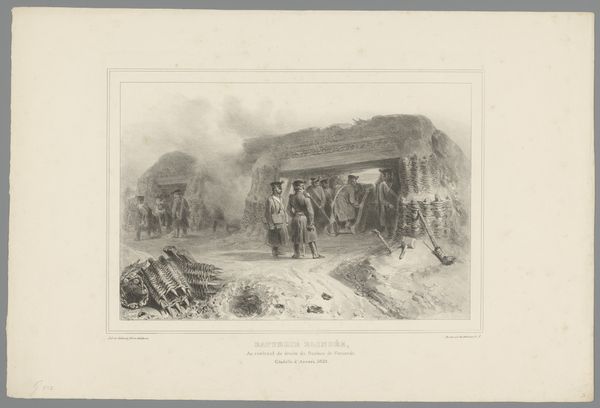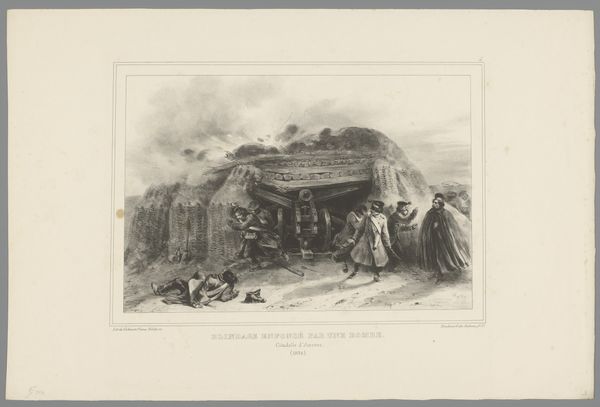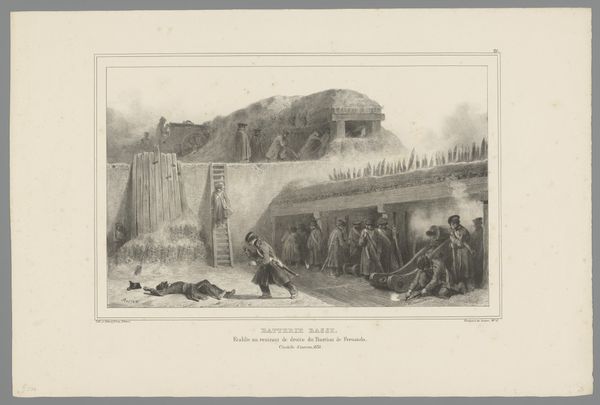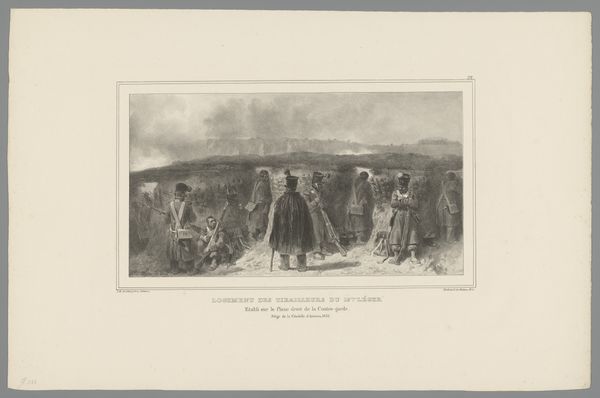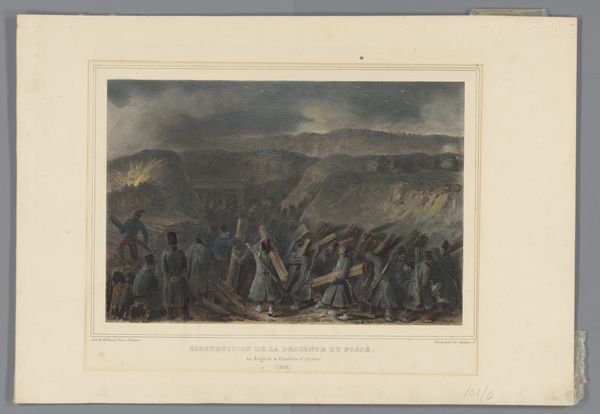
drawing, print, engraving
#
drawing
# print
#
history-painting
#
engraving
#
realism
Dimensions: height 366 mm, width 556 mm
Copyright: Rijks Museum: Open Domain
Auguste Raffet's "Firing a Mortar," created in 1832, shows us more than just a scene of military action; it captures a moment laden with historical weight and symbolic echoes. Observe the prominent vertical pole topped with a cage-like structure. This isn't mere decoration, but a cresset, a beacon used for signalling, reminiscent of ancient watchtowers. In earlier times, these indicated safety or warned of invasion. Now it stands as a signifier for war, and its symbolic progression marks a shift from communal protection to military aggression. Consider the smoke, a visual marker of destruction, similar to smoke in depictions of battle scenes throughout art history. Smoke, from the holy incense in religious paintings to the battlefield here, engages us on a deeply rooted, subconscious level. It evokes primal emotions, triggering sensations of danger, obscuring clarity, and creating a tension that resonates across centuries. The image is charged with conflicting feelings, blending tradition and destruction, signaling how symbols are never fixed. Instead, they are cyclical, resurfacing and evolving across time.
Comments
No comments
Be the first to comment and join the conversation on the ultimate creative platform.

